
# 952 - 1947 3c Everglades National Park
3¢ Everglades National Park
City: Florida City, FL
Quantity: 122,362,000
Printed by: Bureau of Engraving and Printing
Printing Method: Rotary Press
Perforations: 10 1/2 x 11
Color: Bright green
Dedication Of Everglades National Park
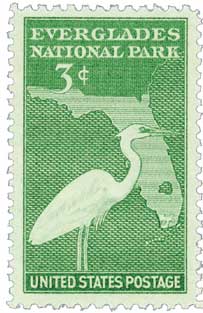
On December 6, 1947, President Harry Truman presided over the dedication of Florida’s Everglades National Park.
Americans didn’t attempt to settle in the Florida Everglades until the late 1800s. Before that, the area had been home to the Seminole Indians that had fled there during the Seminole Wars.
Upon their arrival, American settlers sought to develop the land for agriculture and settlement. The 1880s marked the first modern canals in the Everglades. But after the turn of 20th century, politicians used canalization as a campaign tool. Massive drainage of the wetlands occurred between 1905 and 1910. The canals removed water for sugar cane fields and brought on a land boom. Land was often sold before homes were built, and even before construction was planned. People built their homes on the recently drained lands and removed mangrove trees to create better views.
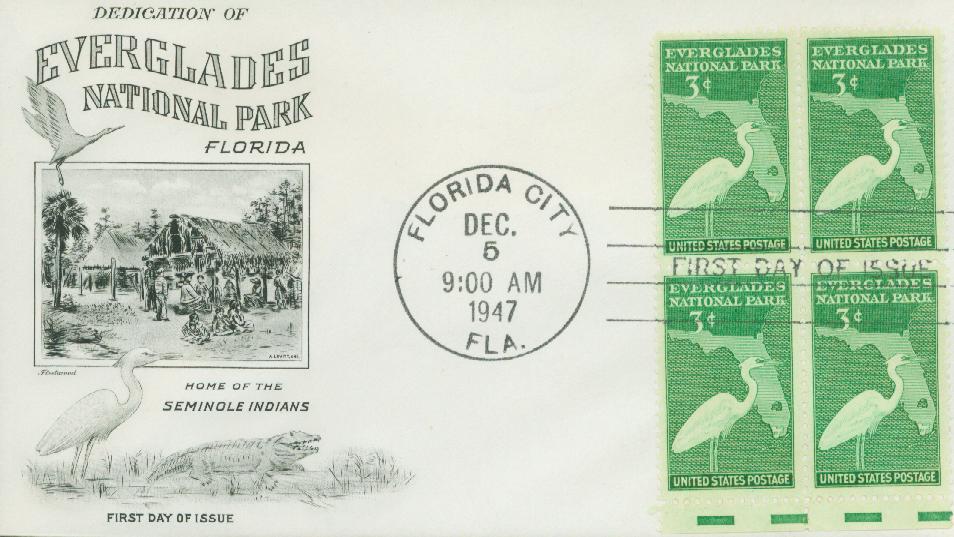
On more than one occasion, devastating hurricanes destroyed communities. The 1928 Okeechobee Hurricane alone claimed 2,500 lives when the Lake Okeechobee levees were breached by massive amounts of water. The Herbert Hoover Dike, a four-story wall, was constructed to prevent this from happening again. However, it also kept most of the Everglades’ water source from reaching the wetlands. The increase in settlement devastated local plant and animal communities. Timber supplies were exhausted and many animals were hunted to near extinction.
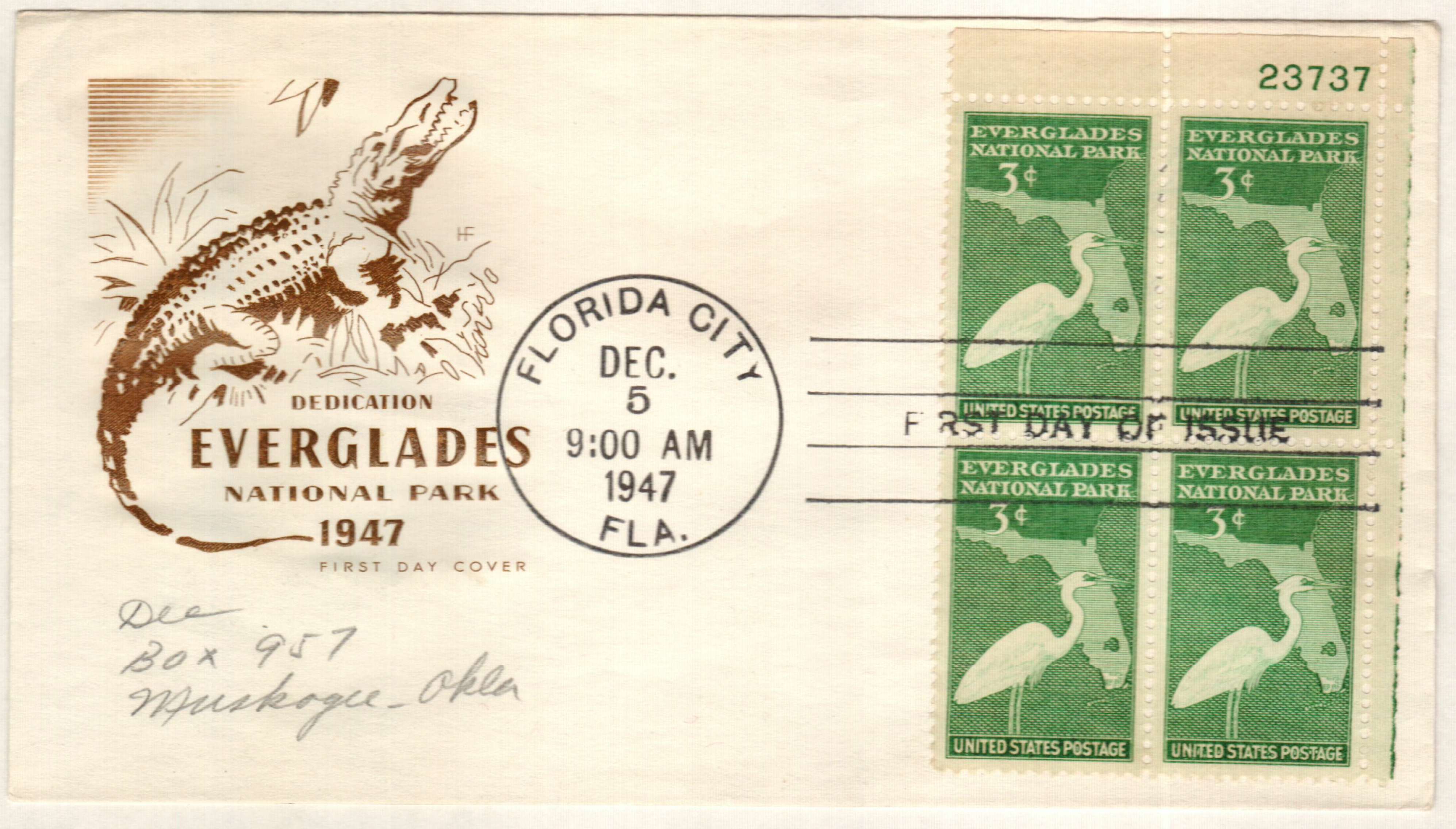
In the early 1900s growing concern over the state of the Everglades was important to several groups. The Florida Federation of Women’s Clubs campaigned to establish Royal Palm State park in 1916 (Florida’s first state park). In Miami, a group of naturalists began work on establishing a national park in 1923. Their efforts led to the creation of the Tropical Everglades National Park Commission, which studied the area. Land developer turned conservationist Ernest F. Coe led this group.
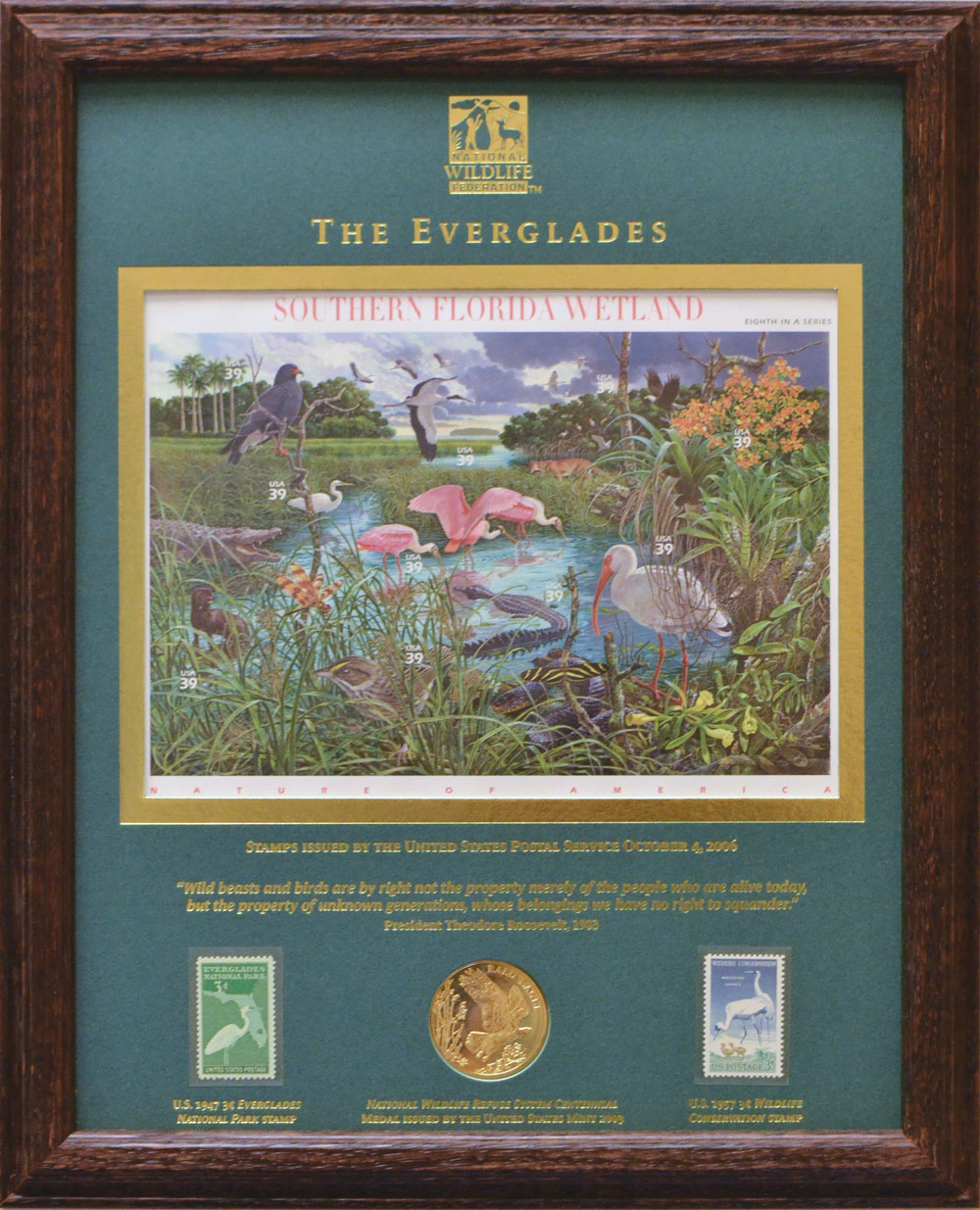
Nicknamed the Father of Everglades National Park, Coe proposed a more than two-million-acre park. His group found success on May 30, 1934, when the U.S. House of Representatives approved creation of the park, but would not allow money to be spent on it for at least five years, due to the Great Depression. Coe worked with U.S. Senator Spessard Holland, who successfully negotiated the purchase of 1.3 million acres for the park. And Miami Herald editor John Pennekamp worked with Florida Legislature to raise two million dollars to purchase the private lands.
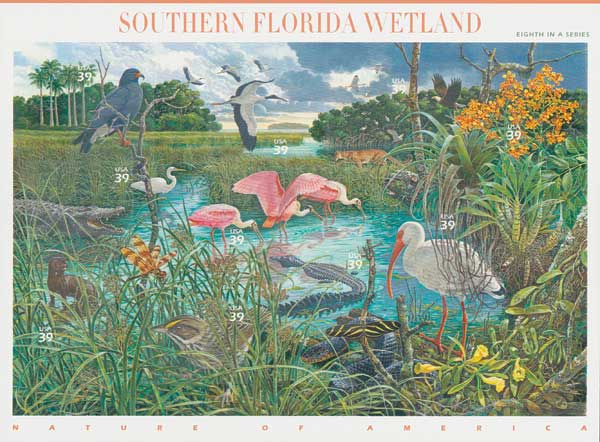
Another major supporter of the park was Marjory Stoneman Douglas, who arrived in the Everglades in 1940s to research an assignment about the Miami River. In her five years of study there, she was horrified to find what human settlement and development had done. She wrote a book about the area, The Everglades: River of Grass, and became one of the park’s most outspoken supporters. This earned her the nicknames, “Grand Dame of the Everglades” and “Grandmother of the Everglades.”
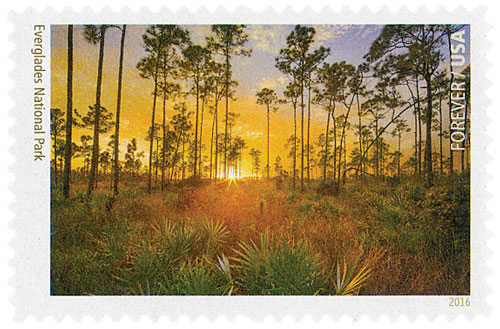
These combined efforts paid off on December 6, 1947, when President Harry S. Truman officially dedicated the park. Despite the national park status, development projects continued, diverting water away from the park to urban areas. It wasn’t until 1972 that this development was finally ended and works in the Everglades focused on fixing the decades of mismanagement.
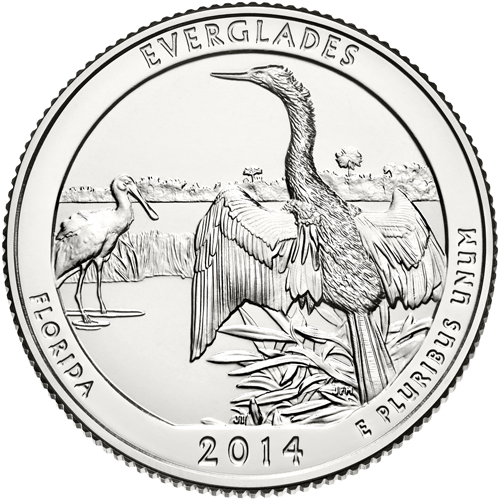
Though major strides have been taken in recent years to restore the Everglades to their natural glory, the area has appeared on the List of World Heritage in Danger several times.
Click here to visit the Everglades National Park website.
3¢ Everglades National Park
City: Florida City, FL
Quantity: 122,362,000
Printed by: Bureau of Engraving and Printing
Printing Method: Rotary Press
Perforations: 10 1/2 x 11
Color: Bright green
Dedication Of Everglades National Park

On December 6, 1947, President Harry Truman presided over the dedication of Florida’s Everglades National Park.
Americans didn’t attempt to settle in the Florida Everglades until the late 1800s. Before that, the area had been home to the Seminole Indians that had fled there during the Seminole Wars.
Upon their arrival, American settlers sought to develop the land for agriculture and settlement. The 1880s marked the first modern canals in the Everglades. But after the turn of 20th century, politicians used canalization as a campaign tool. Massive drainage of the wetlands occurred between 1905 and 1910. The canals removed water for sugar cane fields and brought on a land boom. Land was often sold before homes were built, and even before construction was planned. People built their homes on the recently drained lands and removed mangrove trees to create better views.

On more than one occasion, devastating hurricanes destroyed communities. The 1928 Okeechobee Hurricane alone claimed 2,500 lives when the Lake Okeechobee levees were breached by massive amounts of water. The Herbert Hoover Dike, a four-story wall, was constructed to prevent this from happening again. However, it also kept most of the Everglades’ water source from reaching the wetlands. The increase in settlement devastated local plant and animal communities. Timber supplies were exhausted and many animals were hunted to near extinction.

In the early 1900s growing concern over the state of the Everglades was important to several groups. The Florida Federation of Women’s Clubs campaigned to establish Royal Palm State park in 1916 (Florida’s first state park). In Miami, a group of naturalists began work on establishing a national park in 1923. Their efforts led to the creation of the Tropical Everglades National Park Commission, which studied the area. Land developer turned conservationist Ernest F. Coe led this group.

Nicknamed the Father of Everglades National Park, Coe proposed a more than two-million-acre park. His group found success on May 30, 1934, when the U.S. House of Representatives approved creation of the park, but would not allow money to be spent on it for at least five years, due to the Great Depression. Coe worked with U.S. Senator Spessard Holland, who successfully negotiated the purchase of 1.3 million acres for the park. And Miami Herald editor John Pennekamp worked with Florida Legislature to raise two million dollars to purchase the private lands.

Another major supporter of the park was Marjory Stoneman Douglas, who arrived in the Everglades in 1940s to research an assignment about the Miami River. In her five years of study there, she was horrified to find what human settlement and development had done. She wrote a book about the area, The Everglades: River of Grass, and became one of the park’s most outspoken supporters. This earned her the nicknames, “Grand Dame of the Everglades” and “Grandmother of the Everglades.”

These combined efforts paid off on December 6, 1947, when President Harry S. Truman officially dedicated the park. Despite the national park status, development projects continued, diverting water away from the park to urban areas. It wasn’t until 1972 that this development was finally ended and works in the Everglades focused on fixing the decades of mismanagement.

Though major strides have been taken in recent years to restore the Everglades to their natural glory, the area has appeared on the List of World Heritage in Danger several times.
Click here to visit the Everglades National Park website.









